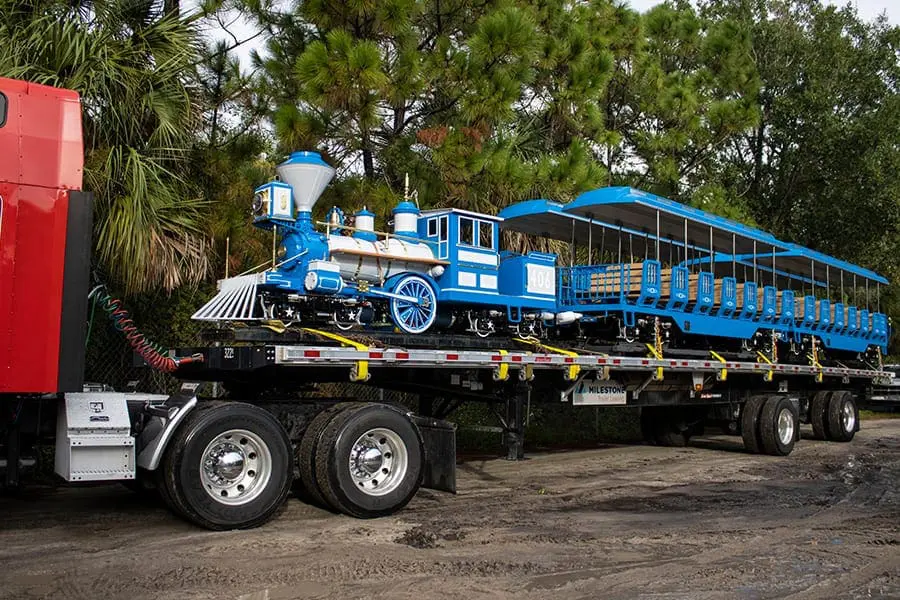

The new train en route to the tracks.
As you may know, a new electric train recently arrived at the Zoo. This transition provided the perfect opportunity to provide many of our Expedition Africa residents a richer, more dynamic quality of life and a better experience for Zoo guests.
But change is never easy, especially when hoofstock (a generic term for antelope, horses and their relatives) are involved. Because they are frequently targeted by predators like lions and crocodiles, most hoofstock species have evolved to be wary of environmental differences and spook easily. This necessitated a gradual, methodical process that leant heavily on the trust built between these animals and their keepers.
Before we get into the details, we’re going to explain how Expedition Africa is set up. The three largest habitats are the giraffe veldt (traditionally housing giraffe and impala), the rhino yard (traditionally housing white rhinos and Grévy’s zebras) and the train yard (traditionally housing scimitar-horned oryx, dromedary camels and an ostrich). The veldt and rhino yard are connected by a gate under the guest boardwalk, and the veldt and train yard are connected through a large barn.
Every morning, the rhinos exit the large barn and shift through the veldt into their yard; once the rhinos are secure, the zebras are shifted into this yard from an adjacent barn, and the giraffe exit the large barn and shift onto the veldt. This process is repeated in reverse every evening.
If your brain is reeling from reading the past two paragraphs, you are beginning to understand the complexity of managing three mixed-species habitats!
We began changing things up in March, shortly after the Zoo closed at the onset of the pandemic. Keepers shifted the zebras out of the rhino yard and onto the veldt. Once the zebras had a few days to acclimate to this new space, we used positive-reinforcement training to coax the zebras into the large barn.
The next challenge was to empty the train yard so track maintenance could commence. The camels were shifted into a fenced-in yard nearby, and Windy the ostrich moved onto the veldt.
Relocating the seven-member oryx herd, however, was going to take more work. The size and complexity of this group meant they needed a large “vacation home,” and, fortunately, there was an opening in the rhino yard! Keepers patiently shepherded the oryx into this space and kept the rhinos in the barn for a few days. The two species are now thriving together.
As we prepared to reopen the train, the zebras were shifted into the train yard and introduced to the camels.
All of the animals seem to be benefitting from these changes. Ultimately, our goal is to acclimate the impala, zebras, oryx and ostrich to all three yards and rotate them around on any given day.
The train is currently running on Saturdays and Sundays and intermittently during the week while the animals adjust to its presence and maintenance continues. Riders will only see zebras and camels right now, but that’s going to change very soon—plans are underway to acquire two new African hoofstock species before the end of the year, and a zebra stallion may find his way to the Zoo, too.
Stay tuned for updates!